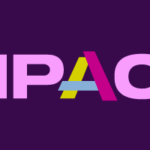CSR: Institutional Models
 Bjørn-Tore Blindheim of the University of Stavanger published “Institutional Models of Corporate Social
Bjørn-Tore Blindheim of the University of Stavanger published “Institutional Models of Corporate Social
Responsibility: A Proposed Refinement of the Explicit-Implicit Framework” on May 23, 2012 in Business & Society. To see other OnlineFirst articles, please click here.
The abstract:
Matten and Moon studied cross-national variations in corporate social responsibility (CSR) forms using an explicit-implicit framework. This article proposes a development and refinement of the explicit-implicit framework to account for, first, intranational variations of CSR, and, second, the role of individual managers in the actual process of developing CSR constructs within a given country. The specific national, institutional context, such as Norway, within which managers construct personal meaning for CSR, is ambiguous and possesses both different and potentially conflicting institutional logics of the role and responsibility of business in a given society. The author suggests that explicit and implicit models of CSR differ in two key respects. One difference concerns whether corporate or collective responsibility mechanisms should be used to address social issues. The other difference concerns whether the scope of issues to which the corporate entity is expected to attend should be broad or narrow. The author proposes four institutional models of CSR that combine the explicit-implicit distinction with these two differences: Explicit Expansionist CSR, Implicit Contractive CSR, Implicit Expansionist CSR, and Explicit Contractive CSR. Focus group interviews with Norwegian managers empirically illuminate these models and the micro-level individual construction of variable meanings for CSR within a national, institutional context.
To learn more about Business & Society, please follow this link.
Are you interested in receiving email alerts whenever a new article or issue becomes available online? Then click here!































































































